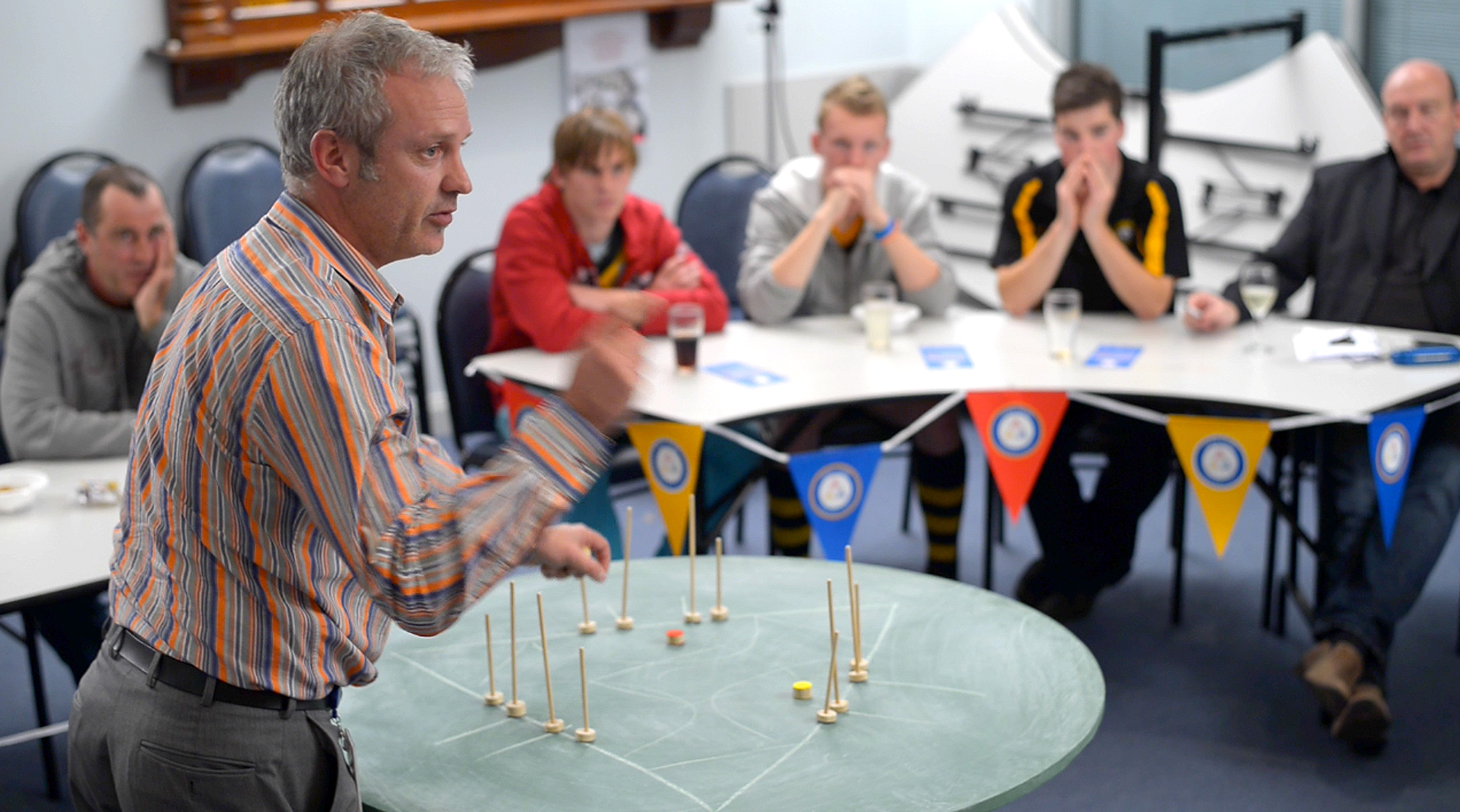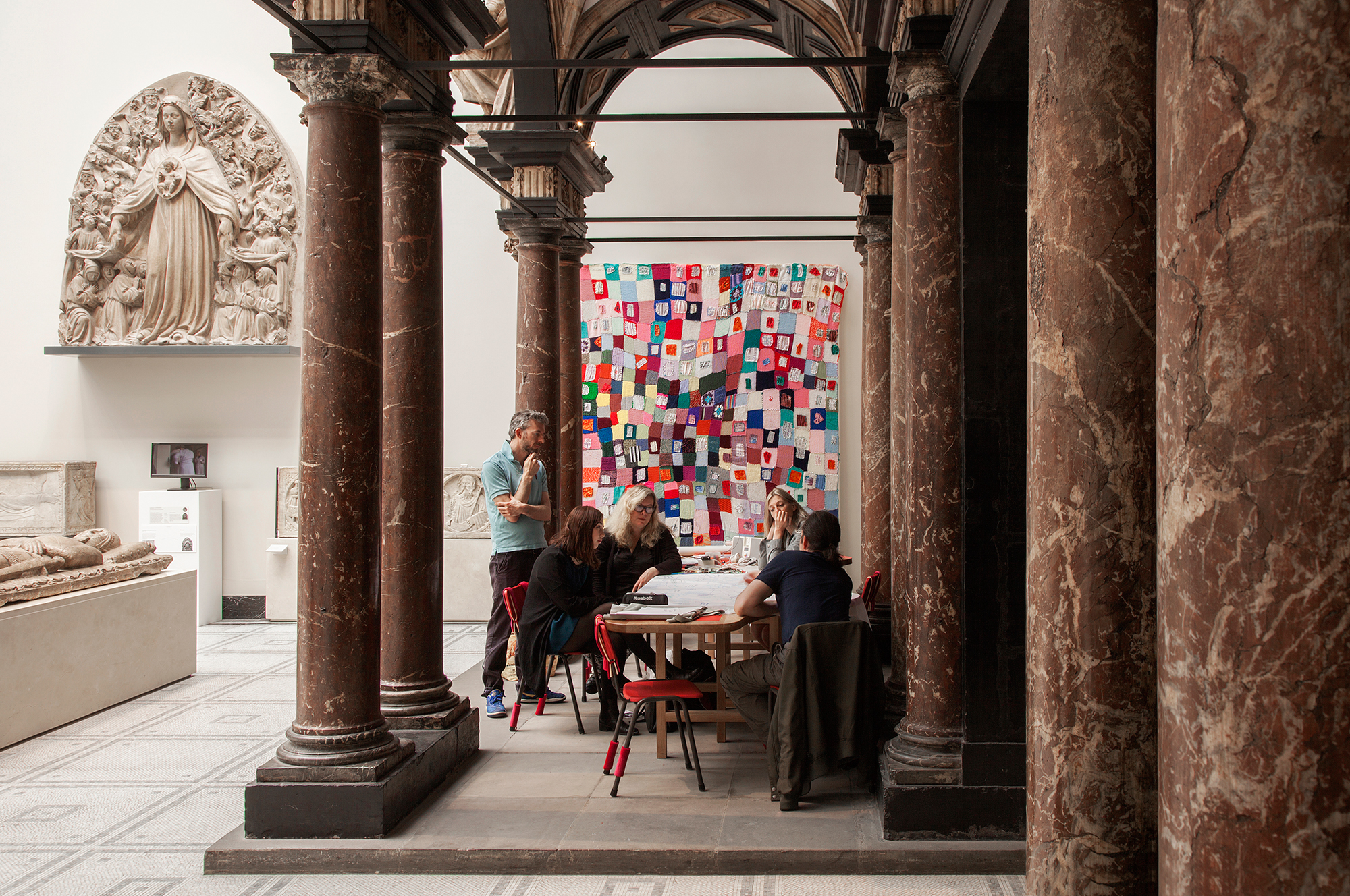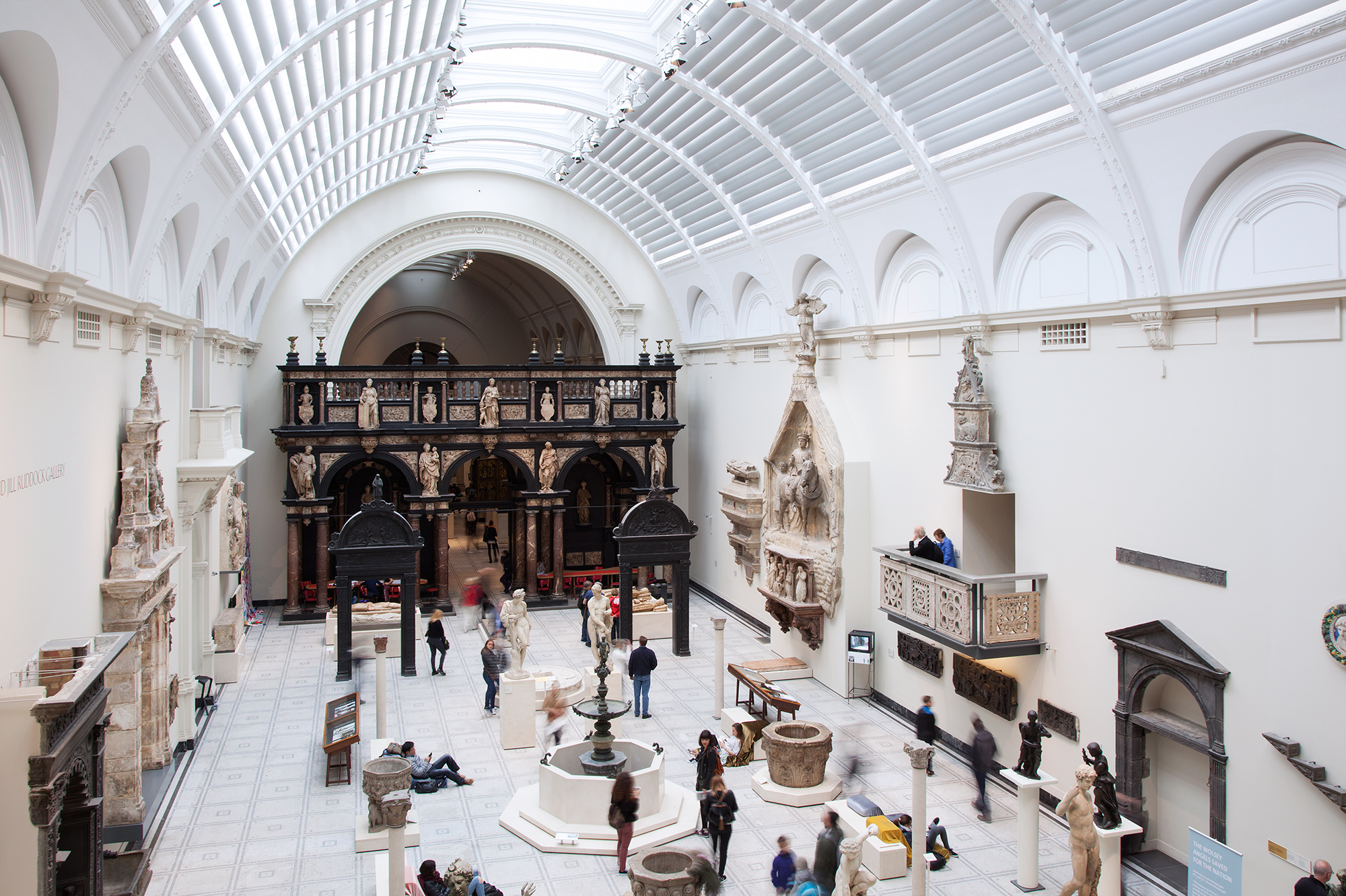The Adjacent Possible: A Centre for Everything x Rory Hyde
In our time, with less and less certainty, the division between disciplines has become more and more porous. Are we seeing a crisis of relevance in art and architecture, or greater opportunity for socially and critically engaged practice that defies categorisation? We invited two practitioners, who are hard to pin down in the best sense, to examine this: Gabrielle de Vietri, artist and co-founder of A Centre for Everything, an ongoing ‘pedagogical experiment’ working across events and actions that fuse the art–activism divide; and Rory Hyde, curator of contemporary architecture and urbanism at London’s Victoria and Albert Museum (V&A).
In her decade-long practice, Gabrielle de Vietri has consistently made art that challenges the very notion and reception of art itself, taking the form of events, performances, invented languages, lectures and even gardens. In 2014, de Vietri gained both notoriety and admiration for her key role in the 2014 Sydney Biennale boycott (a small but active group of selected artists withdrew their work from the major exhibition for ethical reasons—the Biennale was then deeply connected to Transfield, operators of Australia’s offshore detention centres on Manus Island and Nauru).
An architect by training, Rory Hyde is interested in redefining the role of the designer today, through his role at the V&A and in his writing, research and curatorial practice. His book Future Practice: Conversations from the Edge of Architecture (2012) featured interviews with leading agitators in the fertile ground between design, environment, activism and social practice, including Jeanne Gang (Studio Gang), Bruce Mau, and Australia’s own Steve Ashton (ARM), Natalie Jeremijenko and Marcus Westbury.
Here, the pair sits down with Eugenia Lim to talk ethics, publics and promises.

Eugenia Lim: Gabrielle, I was looking at the Three Teams documentary last night, about the world’s first three-way footy match. Could you tell us a bit more about that project?
Gabrielle de Vietri: I worked for about six months in and around Horsham [in regional Victoria] to develop the game. During that time, we consulted with clubs and people from all over the Wimmera. There are many local football clubs in that region.
I went to my first footy game quite late. I grew up in a very non-footy family, and sport was kind of seen as diametrically opposed to culture [laughs]. So I knew nothing about footy, but I went to the MCG for the first time and had all these neurons firing—I didn’t quite expect that. And I thought, How come team sports are always only between two teams, never more? Isn’t that revealing, how we limit ourselves in these binary constructions?

EL: You wanted to make a huge impact. So rather than do it in a metro environment for ‘the usual suspects’, you wanted to engage the whole community.
GDV: Absolutely, I wanted it to be a significant shift in thinking for the people who were involved, to be about something they cared about deeply. Not just an odd thing that happened on the oval one afternoon, but something that would become embedded in the community and be part of really fertile conversations. And it was. It took months of me coming back, over and over again, to show that I was serious. I’d go to trainings and matches and I did vox pops on the street with this tabletop model that they could draw up their ideas on.
EL: And from that you worked out the new rules of the game?
GDV: We noted down all the suggestions and invited key people to speak at this miniature town-style meeting. They put forward proposals; the one we ended up trying was with a circular oval: the goalposts are triangulated but the field is circular and there’s a reduced number of players for each team.

EL: What’s the lasting impact of this project?
GDV: Once the documentary was made, we did a premiere screening in Horsham and everyone who was involved came along. Some of the coaches came to the opening of the Basil Sellers Art Prize [an annual competition for art engaged with sport], where it was a finalist. I’ve also had people from the community contacting me to say, “We want to do another game”—but it’s theirs now, it’s anyone’s. The rules are available online; people can make up their own—the idea is there.
That work was this turning point in my practice: it became less about me, and more about the structures around me.
Rory Hyde: We did a show called All of This Belongs to You and the first statement was to simply write those words in the grand entrance in neon. We tried to break down the boundaries of the museum. One of the great things about the V&A is that you don’t have to buy a ticket. Effectively it’s continuous with the public realm, you can come in off the street and sit down for the whole day and no one is going to shuffle you on.

GDV: The statement ‘all of this belongs to you’ would have been a bit undermined if you had to actually pay to get in [laughs].
RH: [The V&A] was founded on progressive social aims, but it’s become a place of scholarship and expertise and of only collecting the finest examples. There isn’t a manifesto of what the V&A is all about. So those forces have been in contest since day one.
EL: That’s really fertile ground to work in.
RH: It’s fun, and we’re trying to gently revive the best bits of those 19th-century aims. One of the other ways I talk about it is that we’re this amazing place where we can prototype ways of living and help them manifest through design. What are the tools we need to relate to each other spatially or socially?
EL: Can we talk about the muf project in that show?
RH: muf are artist–architects led by Liza Fior and Katherine Clarke. We invited them to create a public space in the Medieval Renaissance galleries. Their starting point was to look at the provenance of the sculptures. Liza undertook a number of interventions, as simple as putting cushions on the floor, to say: ‘Stay here all day, it’s comfortable.’ People slept there. She also identified a 16th-century Venetian frieze of a Madonna holding open her cloak and sheltering people underneath. It was originally on a charity building, as a sort of promise: ‘This is a place of caring.’ However, this changed when it was brought to London: it became an art object rather than an object of social use. So muf proposed to reintroduce that promise. They hosted a charity called Women for Women Refugees in the gallery for the course of the show, where they had English lessons, workshops and art classes. They also used it as a platform for their campaign for women seeking asylum to be housed in community care rather than in prisons. It was a really powerful project that started with a simple idea—which I see in your work too, Gabrielle: can we question existing structures or assumptions from more of a ‘first principles’ attitude?


EL: Why is it important for these actions to happen in a museum rather than in public?
RH: One of the subtle, underlying things about that project is the concept of audience. I think the intended audience for Liza was the museum itself [laughs]. She was interested in institutional change. Of course it was about engaging the public, and doing things in public is critical. But Liza wanted to challenge the curators, who were upstairs in their offices writing their deep, peer-reviewed articles about medieval sculpture; to remind them they’re working with living objects.
EL: The V&A is funded by the government. Aren’t you, in effect, a public servant?
RH: Absolutely, the company credit card has the Queen’s crest on it! [laughs]
EL: Coffees on the Queen!
RH: Basically it’s fifty-fifty: anything beyond running costs, we need to raise through sponsorship, donations and membership. And that leads you into sticky territory. On the one hand, you’re trying to balance curatorial and institutional independence, but on the other, we can’t just say no to every sponsor …
GDV: It’s interesting you mention the Madonna’s transformation from being an act of invitation to something that was rendered neutral. I guess that was the realisation I went through with the Sydney Biennale boycott.
EL: How many artists ended up joining the boycott?
GDV: Nine [international and local] artists strategically withdrew their work. At the time, you have your whole ego involved and it took a lot of searching to figure out what to do.
EL: Because it’s a huge opportunity as an artist, it’s a huge platform.
GDV: Yeah, it’s the AFL Grand Final of the art world.
RH: It doesn’t get any bigger. So you withdrew?
GDV: Yes. It revealed to me that museums and institutions can neutralise things that appear to be radical: in the end, context is integral to meaning. The art institution is a framework and is part of the reading of the work. When I realised the institution couldn’t set the conditions for me to make art that is actually transformative, I began to look for tools and frameworks elsewhere, from activism, to work out what I was doing and what I was trying to do. That’s where I am now.

EL: Tell us about your skywriting work Shut Down Manus, Close Nauru.
GDV: It was a year after the boycott and a year after the murder of asylum seeker Reza Barati on Manus Island. We realised that, although Transfield had suffered an almost fatal blow, the offshore detention industry was still thriving. Asha Bee Abraham, Will Foster and I weren’t trying to create an artwork at the time. We wanted to create an image that would reignite public awareness and give the media a reason to write about the anniversary of Reza Barati’s death (because sadly, without images, there’s often no story). In five days, 348 people crowdfunded $10,000 to write ‘Close Nauru’ above Parliament House and ‘Shut down Manus’ above the Sydney Opera House.
The public response was incredible. I don’t usually measure success in terms of tweets, but that was the material of this work—it was like, how far can you spread this image? It reached Manus Island and some refugees detained there wrote to us to say that they had heard our message.

EL: Rory, in Future Practice, you introduce the idea of the crisis of relevancy in architecture. You suggest that architects were once social instigators of sorts, the people entrusted with the design and social planning of cities and that, since the failure of some of the Modernist projects, architects have become more about ‘starchitecture’ and signature design …
RH: I became interested in practice as a tool; practice and institutions are where long-term thinking can happen, where change can happen. Architecture had created a practice that was basically about making nice houses for rich people, and somehow had given up the ambition to work for society. After the economic crisis of 2008—which is ongoing—the resilience of that model became severely questioned. So I started thinking, What does a practice for the fringe look like, or what is ‘the edge’ of practice? I think increasingly that the edge is becoming the centre.
EL: Can you ‘do good’ and ‘be good’ as an artist, architect or practitioner? What’s the relationship between ethics and aesthetics?
RH: In architecture, doing good and being good aren’t the same thing, which is confusing for everyone, not least the architects! The buildings we give prizes to are rarely ones which have contributed to society. Which is not to say that architects don’t have a civic conscience, I just think we need to reset that relationship between working for the client, as is narrowly defined as the person paying you, and the public at large. I guess, in my own work, I’m interested in highlighting practices of that kind, and engaging with a broader public through the museum.
GDV: I am seeking the answer to your question in collaborative practice, in finding an almost archaic depth in working together, rather than a cynical emptying out of meaning and Airtasker-style art opportunities. Working within capitalism, it’s very easy to ‘do bad’ with the decisions that you make.
The work that excites me is art that functions to serve society in not always obvious ways. I think artists today do have a responsibility to consider our work in terms of impact: not in this boring, KPI kind of way, but to really examine our drive for making art. Art that is as much about problem-causing as it is about problem-solving. Art that can confuse and divide as much as it reassures and unites. Art that can work against injustice and at the same time imagine its alternatives. Imagination is the future before it has happened. Let’s work together to put it to good use.
A very warm thank you to Rory Hyde and Gabrielle de Vietri for sharing their thoughts on the role of art and architecture in these critical times.
